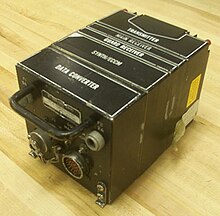Have quick

HaveQuick is an ECM-protected military wideband frequency-hopper system in the aeronautical mobile service for which harmonized in NATO-wide UHF band 225-400 MHz frequency availability is.
development
After the Second World War, the USA and the Allied Air Forces used AM radios in the NATO-wide harmonized UHF frequency band 225–400 MHz for short-range radio applications in a quasi-optical air-to-air and surface-to-air view. Initially, during the development phase, during the procurement and for the subsequent use on the part of the military users, there were no requirements regarding secure communication and protection against enemy interference for aircraft and helicopters. With the rapid development of electronics in the period after the Vietnam War and into the 1970s, a point was finally reached at which military radio communications could be detected, eavesdropped and disrupted with the simplest of equipment. This enabled communication to be prevented.
The have-quick program
The Have-Quick program offered the solution to the existing problem. The development engineers benefited from the fact that the latest radios already had a multi-channel frequency synthesizer, keyboard and display for data entry. To implement the interference protection functionality, only the development of a timer device for exact time synchronization and a microprocessor for controlling the frequency hopping were additionally required.
Have-quick initialization
Aeronautical radio stations and aeronautical radio ground stations that are to work in a have-quick radio circuit are to be initialized with the exact time of day, which is usually generated by a GPS receiver. In addition, the valid key password and the required network number must be entered. This gives the user in question the required access authorization to a specific network, network group or user mode.
Time of day, key and network number generate sequences which in turn control the changes in the individual frequency channels, i.e. frequency hopping.
SATURN
Have Quick was widespread towards the end of the twentieth century. The system has been used in almost all US military aircraft since around 2005, but also largely in those of the NATO air forces. In addition, the system is subject to constant obsolescence management and improvements. Examples of this are Have Quick II Phase 2 and second generation devices under the designation Second generation Anti-Jam Tactical UHF Radio for NATO (SATURN) . The latter are freely programmable, much more complex frequency hoppers and are generally more resistant to Electronic Counter Measures (ECM).
SATURN is fully downward compatible with all modifications of Have Quick and also uses the NATO-wide harmonized UHF band 225-400 MHz , for which there is frequency availability in all NATO countries .
User management
In Germany, the Air Force Support Associations command is responsible for Have-Quick management. Obsolescence management, configuration control and commissioning of software maintenance / software changes also took place there.
particularities
- National air forces usually work in a common network group. In the past, however, there were definitely deviations from this regulation: For example, the Have-Quick users of the German Air Force in northern Germany were grouped under the Second Allied Tactical Air Force in Network Group 1, while the southern part was combined with the Fourth Allied Tactical Air Force belonged to network group 2.
- The coordination of the frequency channels for Have Quick in the UHF band, the design of the so-called hop sets, is mostly done in NATO Europe by the NATO Allied Radio Frequency Agency (ARFA) in Brussels.
- Have Quick can operate in peace mode with restricted frequency use for training and exercise purposes. These restrictions are lifted in deployment mode. Four network numbers can be used across networks in network group 1 and network group 2.
- Have Quick is not an encryption or crypto system, but some Have Quick radio stations are compatible with cryptographic devices such as the KY-58 VINSON family.
See also
Web links
Individual evidence
- ^ NATO C3 Board, AC / 322-N / 0815, "NATO Joint Civil / Military Frequency Agreement - The NATO Joint Civil / Military Frequency Agreement (NJFA) ", ANNEXD 1, page 1-7, harmonized NATO band type 1.
- ^ NATO Joint Civil / Military Frequency Agreement (NJFA)